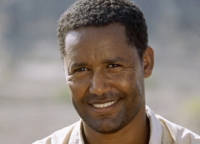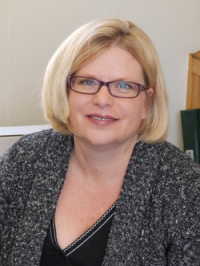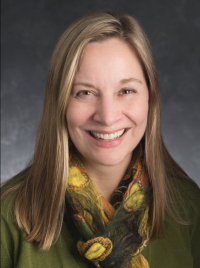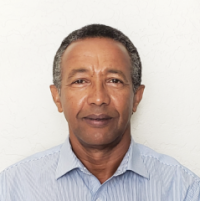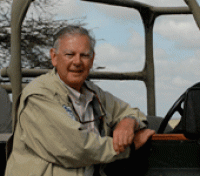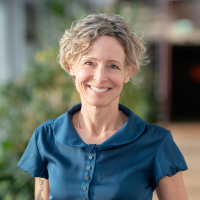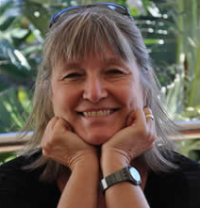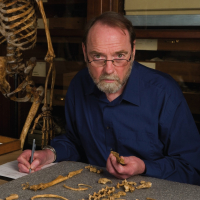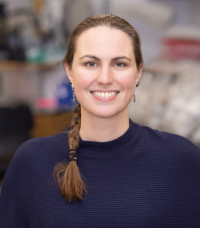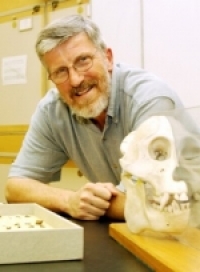Lucy 50th Anniversary Symposium: The Impact of "Lucy" on Human Origins Science
Biographical Sketches: Speakers
University of Chicago
My research program focuses on the discovery and interpretation of hominid fossil remains and their environments with emphasis on fieldwork designed to acquire new data on early hominid skeletal biology, environmental context, and behavior. Specifically, I am currently working in the following areas:
- Description of new hominin and non-human primates
- Growth and development in early hominins
- Application of new techniques, such as CT analysis to investigate internal and external structures of hominin fossils
- Analysis of environmental and ecological factors affecting primate and human evolutionary processes
In order to support this with new data, I initiated the Dikika Research Project (DRP) in 1999, which is undertaking multidisciplinary field research on sediments that span in age from over 3.8 Ma to less 500,000, and is addressing some of the major questions in paleoanthropology. The Pliocene site of Dikika promises to increase our knowledge of the diversity of hominins prior to the time period represented by the oldest sediments at Hadar and other east African sites, and subsequent to the radiation of hominin species after the split from the great apes. The sediments from Asbole, on the other hand, represent a time period poorly known in the region: the Middle Pleistocene. Thus the area has potential to increase our understanding of the patterns of transition from H. erectus (H. heidelbergensis) to H. sapiens.
Smithsonian Institution
Anna Katherine (Kay) Behrensmeyer is a Research Curator and Senior Scientist in the Department of Paleobiology at the Smithsonian’s National Museum of Natural History. She is recognized as a pioneer in taphonomy, and her research is broadly aimed at understanding the evolution of terrestrial ecosystems over the past 300+ million years. Kay’s career has been inspired by collaborative field projects in North America, Africa, and Pakistan, ranging up and down the geological time column from the Triassic to the Pleistocene. She has explored temporal versus spatial averaging in the fossil record and contributed concepts such as “isotaphonomy” and “taphonomic control fossils.” She designed methods for sampling paleontological sites aimed at understanding taphonomic biases, with a particular focus on how these affect the record of human evolution. Kay’s research in modern ecosystems has advanced knowledge of taphonomic processes that alter and recycle organic remains. Her 40+ year study of the “taphosystem” of Amboseli Park, Kenya, shows how changing ecological processes affect links between the living, the dead, the buried and fossilized. She is a leader of the Evolution of Terrestrial Ecosystems (ETE) Program and an active contributor to NMNH exhibits and outreach efforts, including her present role as lead scientist for the Deep Time Initiative.
University of New Mexico
I am an evolutionary anthropologist specializing in great ape behavior and biology. My research examines the interactions of ecology, health, reproduction, and behavior. A key goal of this research is to identify sources of variation in life history within and between species as a way of understanding the changes that have taken place during the evolution of the unique human life course.
Science Magazine
Ann Gibbons is a contributing correspondent for Science magazine and the author of The First Human: The Race to Discover Our Earliest Ancestors and contributor to A Most Interesting Problem: What Darwin's Descent of Man Got Right and Wrong About Human Evolution. She has taught science writing at Carnegie Mellon University and written about human evolution recently for National Geographic, SLATE, Smithsonian magazine and other publications.
She was awarded the American Geophysical Union, 2019 David Perlman Award for Excellence in Science Journalism – News for her magazine story about "Why 536 was the worst year to be alive"; the National Academy of Sciences, National Academy of Engineering, and Institute of Medicine 2018 and 2013 Communication Awards for best magazine/newspaper articles published in special issues of Science on human migration and human conflict; the 2014 Society of American Archeology Gene S. Stuart Award for “The Thousand-Year Graveyard,” which appeared as Science’s first multimedia story on December 13, 2013; and the 2012 Anthropology in Media Award from the American Anthropological Association (AAA) for a decade's worth of stories on human origins and evolution.
She has been a fellow in the Knight Science Journalism Fellowship at the Massachusetts Institute of Technology; a science writing fellow at the Marine Biological Laboratory in Woods Hole, MA, and a Media Fellow at Harvard Medical School’s seminar in Modern Plagues: Emerging Threats to Global Health.
Arizona State University
Yohannes Haile-Selassie is a professor in the School of Human Evolution and Social Change and director of the Institute of Human Origins at Arizona State University (ASU), in addition to serving on the CARTA External Advisory Board.
His research interest is understanding the paleobiology and paleoecology of early human ancestors based on the fossil record. He has made fossil discoveries that are significant in human origins research and leads an international multidisciplinary team that conducts fieldwork in the Afar Region of Ethiopia.
Arizona State University
Kim Hill is a professor at Arizona State University in the School of Human Evolution and Social Change and the Institute of Human Origins. His research has focused on foraging decisions, food sharing, parental investment, life history evolution, human biology, cooperation, and the evolutionary implications of hunter-gatherer social structure.
Arizona State University
Donald C. Johanson is the Virginia M Ullman Chair in Human Origins in the School of Human Evolution and Social Change and the Founding Director of the Institute of Human Origins. For the past 30 years, he has conducted field and laboratory research in paleoanthropology. Most notably, he discovered the 3.18 million year old hominid skeleton popularly known as "Lucy." Through grants from the National Science Foundation, the L.S.B. Leakey Foundation, and the National Geographic Society, Johanson has carried out field research in Ethiopia, Yemen, Saudi Arabia, Egypt, Jordan and Tanzania. He is an Honorary Board Member of the Explorers Club, a Fellow of the Royal Geographical Society, a member of many other professional organizations and recipient of several international prizes and awards. In 1975, Johanson was appointed curator of physical anthropology at the Cleveland Museum of Natural History and, beginning in 1976, developed a laboratory of physical anthropology that attracted scholars from all over the world.
He has written, among other books, the widely read "Lucy: The Beginnings of Humankind" (with Maitland Edey), 1991, and numerous scientific and popular articles. In 1994, he co-wrote "Ancestors: In Search of Human Origins" and narrated a companion NOVA television series seen by more than 100 million people worldwide. Most recently, he published "From Lucy to Language" (with Blake Edgar, principal photography by David Brill), 1996. Johanson is a frequent lecturer at university and other forums in the United States and abroad.
National Museums of Kenya, Nairobi
Dr. Job Kibii is a senior research scientist and Head of Palaeontology and Palaeoanthropology at the National Museums of Kenya. He was first indigenous African to obtain a PhD in Archaeology and Palaeoanthropology from the University of the Witwatersrand-South Africa. He has directed research in sites such as Malapa, Gondolin, Pangani and Kimengich. Kibii was a member of the discovery team behind Australopithecus sediba and has discovered hominid specimens belonging to Australopithecus africanus and Australopithecus sediba. His research interest includes using taphonomy to understand depositional events in cave systems and the behaviour of early hominins by examining their postcranial morphology.
Max Planck Institute for Evolutionary Anthropology
Tracy Kivell is a paleoanthropologist whose research focuses on the evolution of the skeleton in living and fossil primates, including our human ancestors (hominins), to further our understanding of the evolution bipedal locomotion, manipulation and tool use throughout our evolutionary history. Tracy aims to better understand the relationship between bone shape and function through analyses of ontogeny (development), internal (trabecular and cortical) bone structure, and the biomechanics of primate locomotion.
Kaatholieke Universiteit Leuven
I am a philosopher of biology currently working as a postdoc at KU Leuven (Institute of Philosophy). I am interested in the dynamics of scientific reasoning and conceptual foundations of Middle and Late Pleistocene paleoanthropology and archaeology. My work has focused on HS origins, 'behavioral modernity', Neanderthal admixture and extinction, and cognitive archaeology. My current project is on the character concept and character individuation in evolutionary biology and paleoanthropology.
Arizona State University
My main research interest is community ecology of primates and mammals to 1) understand living diversity and biogeography across continents and within regions, and 2) using the identification & analyses of mammalian fauna from Plio-Pleistocene hominin localities to understand community structure through time and to 3) reconstruct the habitat of fossil hominins. Current field research is focused on early hominin sites (Australopithecus afarensis and early Homo) in the Afar Region of Ethiopia and understanding the behavioral ecology of hominids that used bifacial technology in the Pleistocene of South Africa.
I teach courses at both the undergraduate and graduate level. Undergraduate courses include Stones, Bones and Human Evolution (online), Fossil Primates, Ecology and Human Evolution, and a South African study abroad. Graduate courses include Zooarchaeology and Paleoecology I, Primate Paleobiology, Macroecology and Primate Communities, and Ecology and Human Evolution.
American Museum of Natural History
Ian Tattersall is currently curator emeritus in the Division of Anthropology of the American Museum of Natural History in New York City. He has carried out both primatological and paleontological fieldwork in countries as diverse as Madagascar, Vietnam, Surinam, Yemen, and Mauritius. Trained in archaeology and anthropology at the University of Cambridge, and in geology and vertebrate paleontology at Yale University, Ian has concentrated his research since the 1960s in three main areas: the analysis of the human fossil record and its integration with evolutionary theory, the origin of human cognition, and the study of the ecology and systematics of the lemurs of Madagascar.
Ian is also a prominent interpreter of human paleontology to the public, with numerous trade books to his credit, as well as several articles in Scientific Americanand the co-editorship of the definitive Encyclopedia of Human Evolution and Prehistory. He lectures widely at venues around the world, and, as curator, has also been responsible for several major exhibits at the American Museum of Natural History, including Ancestors: Four Million Years of Humanity (1984); Dark Caves, Bright Visions: Life In Ice Age Europe (1986); Madagascar: Island of the Ancestors (1989); The First Europeans: Treasures from the Hills of Atapuerca (2003); the highly acclaimed Hall of Human Biology and Evolution (1993); and the successor Hall of Human Origins (2007).
Yale University
Jessica Thompson specializes in human evolution, and especially those aspects that can be revealed through the analysis of ancient animal bones found at archaeological sites (zooarchaeology). She leads the Malawi Ancient Lifeways and Peoples Project in Malawi, central Africa, where she has maintained a field site since 2009. This multidisciplinary work combines archaeological science, evolutionary theory, and hunter-gatherer ethnography to develop and interpret the first cultural and paleoenvironmental chronologies in the region that span the transition from the last Ice Age. Her other research, based on collaborative work in Ethiopia, targets the opposite end of the archaeological record, at its origin in the Pliocene. Thompson is PI of the Yale Paleoarchaeology Laboratory.
Twitter: @YalePaleoarch (public lab) and @archaeochica (private)
University of Missouri-Columbia
Carol Ward earned her B.S. in Anthropology and Zoology from the University of Michigan in 1986 and her Ph.D. in Functional Anatomy and Evolution from the Department of Cell Biology and Anatomy at the Johns Hopkins School of Medicine in 1991. She joined the faculty at the University of Missouri in 1991 in a joint appointment in the Departments of Anthropology and Anatomy. In 2006, she moved full time to the Department of Pathology and Anatomical Sciences where she is a Professor and Director of Anatomical Sciences in that department’s Integrative Anatomy group. Ward has studied the evolution of Miocene hominoids as well as Pliocene and Pleistocene hominins. She has done paleontological fieldwork in Kenya and Hungary. She is co-director of the West Turkana Paleo Project through the National Museums of Kenya, with whom she has worked at the Australopithecus anamensis site of Kanapoi and will begin fieldwork at Lomekwi in 2016. Her work has been funded by the National Science Foundation, Leakey Foundation, Wenner-Gren Foundation, and the University of Missouri. She is a Fellow of the American Association for the Advancement of Science, holds affiliations with the National Museums of Kenya, Institute of Human Origins, Cleveland Museum of Natural History, and the Evolutionary Studies Institute in South Africa, is a member of the African Rift Valley Research Consortium, and has won several teaching awards.
George Washington University
Bernard Wood is The University Professor of Human Origins and Professor of Human Evolutionary Anatomy at George Washington University. Dr. Wood is a medically qualified paleoanthropologist who practiced as a surgeon before moving into full-time academic life in 1972. In 1982, he was appointed to the S.A. Courtauld Chair of Anatomy in The University of London, and in 1985 he moved to The University of Liverpool to the Derby Chair of Anatomy and to the Chairmanship of the Department of Human Anatomy and Cell Biology. He was appointed the Dean of The University of Liverpool Medical School in 1995 and served as Dean until his move to Washington in the fall of 1997. When he was still a medical student, he joined Richard Leakey's first expedition to what was then Lake Rudolf in 1968 and he has remained associated with that research group, and pursued research in paleoanthropology, ever since. His research centers on increasing our understanding of human evolutionary history by developing and improving the ways we analyze the hominin fossil record, and on using the principles of bioinformatics to improve the ways we store and collate data about the hominin fossil record. He has a special interest in the recognition of species and genera in the hominin fossil record, and he collaborates with researchers interested in the evolution of non-hominins in the interests of ensuring that we analyze hominin evolution in a proper comparative context. He has written one of the monographs in the series on the Koobi Fora site, and publishes papers on paleoanthropological topics. He is also the editor of the Wiley-Blackwell Encyclopedia of Human Evolution.
